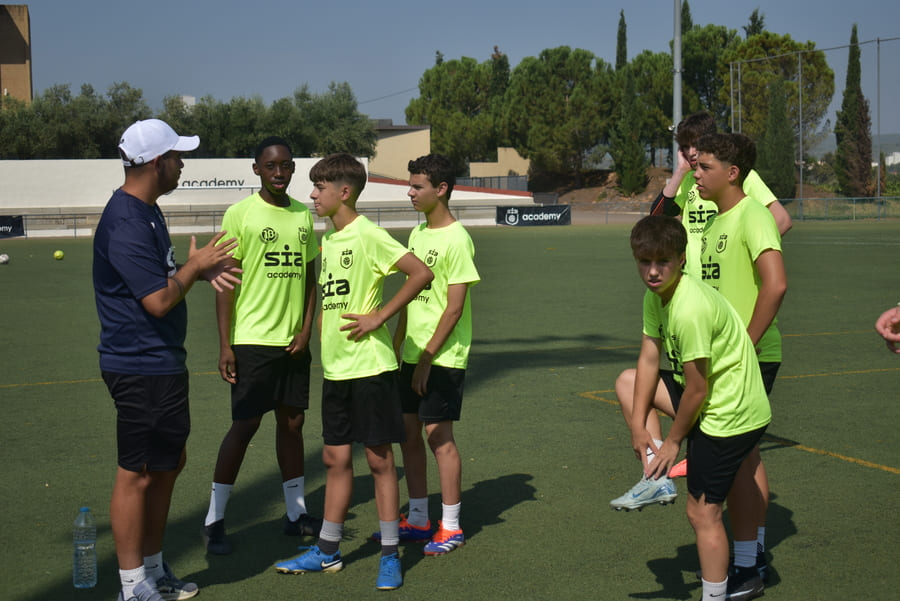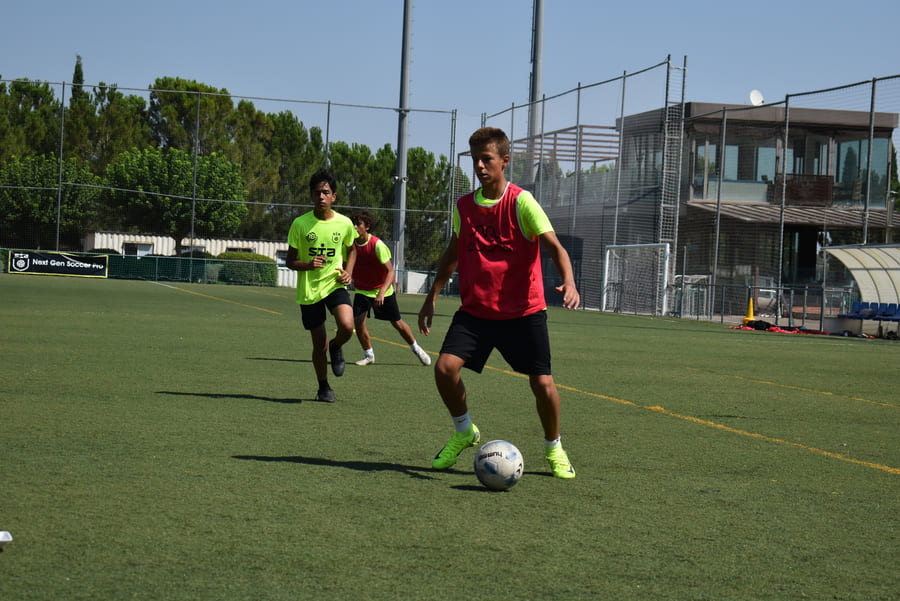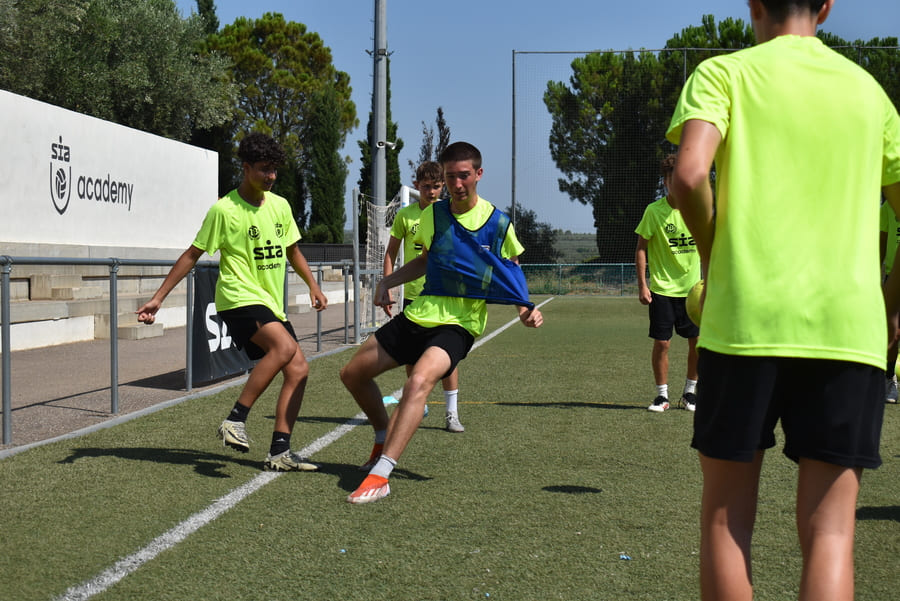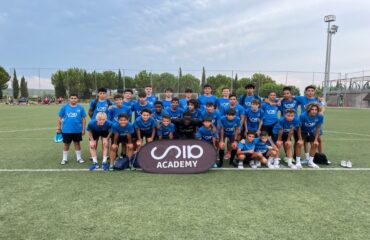Endurance in football is understood as the player’s ability to sustain physical effort over a prolonged period of time, adapting to different intensities without losing effectiveness in their actions. It is not only about running long distances, but about maintaining optimal performance in intermittent efforts, combining phases of low intensity with moments of maximum demand, such as sprints, changes of direction, or duels.
During preseason, improving this quality becomes a priority, as it provides the foundation to prevent injuries and ensure consistent competitiveness throughout the season. At SIA Academy, this approach is at the core of physical planning. As José Luis, the academy’s coach, points out: “A resistant player is not only the one who lasts more minutes, but the one who keeps focus and technical quality even in the final stages of the match.”
Table of contents
Importance of endurance in football
In modern football, the pace is higher than ever. Players cover between 9 and 12 kilometers per match, alternating aerobic and anaerobic efforts. Therefore, working on endurance means improving overall performance: staying fresh in the final minutes, reducing mental fatigue, and minimizing the risk of overload injuries.
In the words of José Luis: “Endurance is the foundation upon which everything else is built: technique, tactics, and mentality. If the base fails, sooner or later the player will pay the price.” At SIA Academy, this principle guides preparation from the very first day of preseason.

Continuous running with pace variations
The classic continuous run is adapted in football by introducing pace variations. This means alternating jogging, medium-paced running, and controlled bursts of high speed.
This training develops aerobic capacity and lactate tolerance, both key for sustaining repeated efforts. At SIA Academy, coaches monitor each session with GPS to adjust distances, times, and heart rates.
High-intensity intervals (HIIT)
High-intensity intervals reproduce the demands of the game. They consist of short series of sprints or explosive exercises followed by active rest. For example: 30 seconds of sprinting and 30 seconds of jogging, repeated 10 to 15 times.
This method improves anaerobic capacity and recovery between efforts, two critical skills in football. At the academy, variants with the ball are applied to merge physical and technical preparation.
Strength-endurance circuits
Endurance is not only about aerobic capacity: muscles must also sustain effort. Strength-endurance circuits combine exercises such as squats, burpees, jumps, or planks, performed at high intensity with short rests.
The goal is for players to maintain technical quality under fatigue. At SIA Academy, these circuits are tailored by position: a center-back does not train the same way as a winger.
Ball work and small-sided games
A distinctive feature of SIA Academy is integrating fitness with the ball. Small-sided games (possession drills, 5v5 matches, intense rondos) generate fatigue, demand endurance, and at the same time train tactics and decision-making.
Thus, the player improves physical condition in contexts very similar to real matches, ensuring direct transfer to competition.

Uphill training and surface changes
Uphill sprints strengthen muscles, increase power, and improve recovery capacity. They also lower the natural running speed, reducing joint impact.
At the academy, hills are combined with natural grass, synthetic turf, or even sand to develop stabilizing muscles and prevent injuries.
Position-specific endurance sessions
Each role on the pitch requires a different type of endurance:
- Goalkeepers → short reaction and strength work.
- Defenders → lateral movements and intermittent loads.
- Midfielders → continuous running with longer intervals.
- Forwards and wingers → repeated sprints and explosive pace changes.
This specific design ensures every player trains according to their real competitive needs.
Technology applied to endurance
At SIA Academy, technology is a key part of preparation. Through GPS, heart rate monitors, and force platforms, staff measure each player’s effort in real time, adjusting workload and avoiding overtraining.
This way, endurance is built progressively, safely, and based on objective data.
Endurance is the quality that allows players to compete at high intensity throughout the season. In preseason, training it through varied and personalized methods is the key to reaching maximum performance.
At SIA Academy, the combination of continuous running, HIIT, circuits, ball training, and advanced technology ensures a player who is physically and mentally ready to perform at their best. Because, as José Luis remarks, “the real difference is not seen in the first minutes, but in the last, when the one who has prepared best keeps running with the same strength and the same clarity of mind.”






